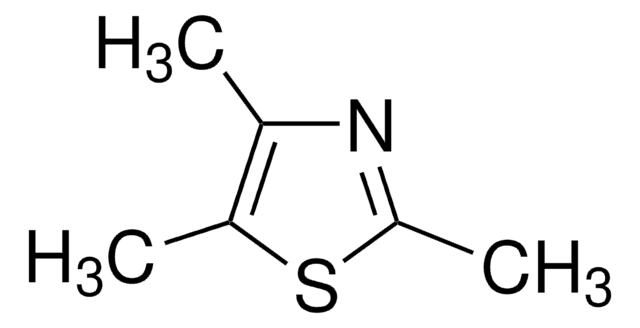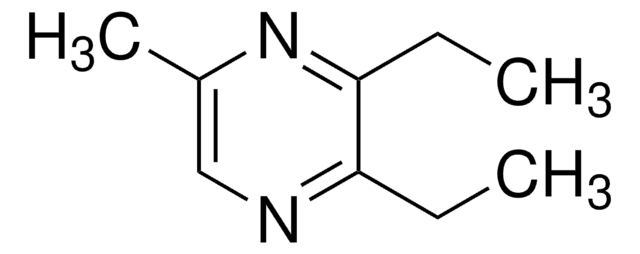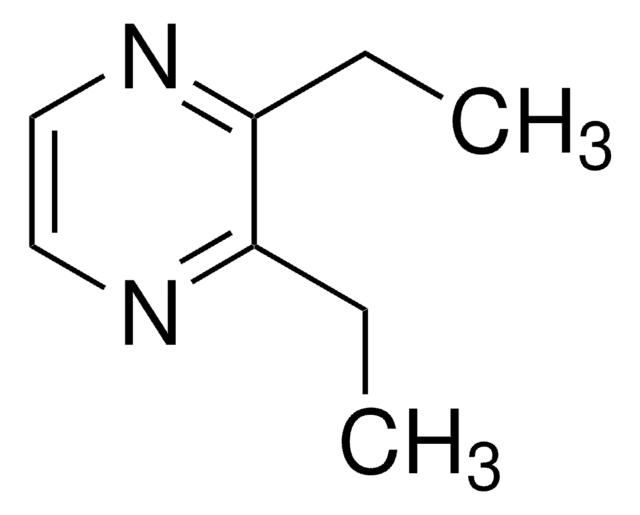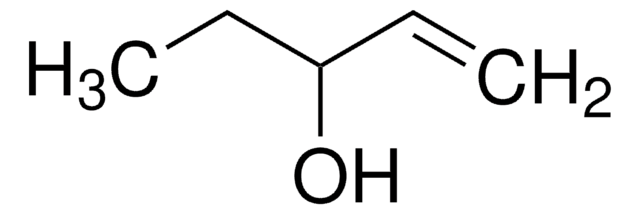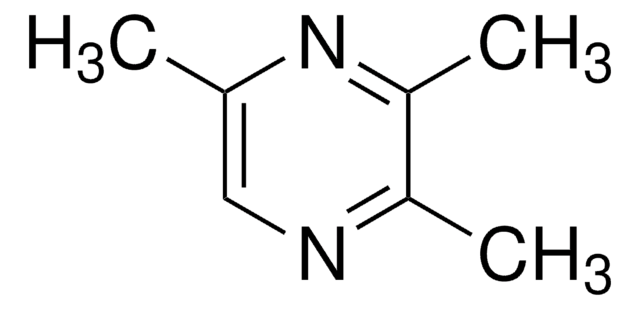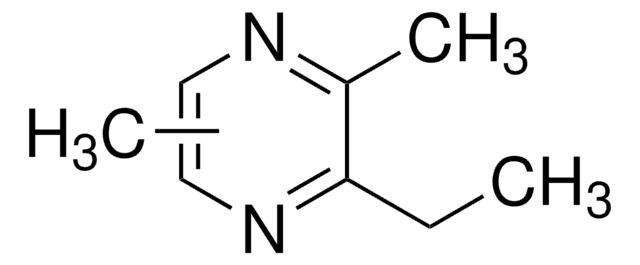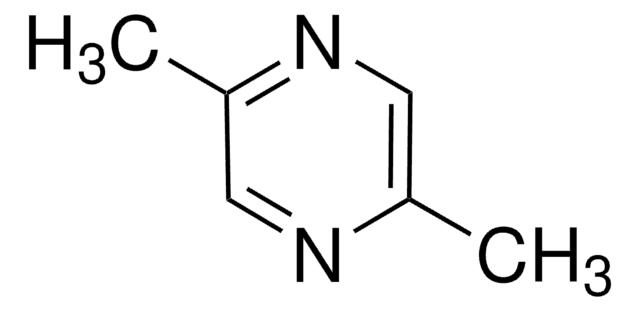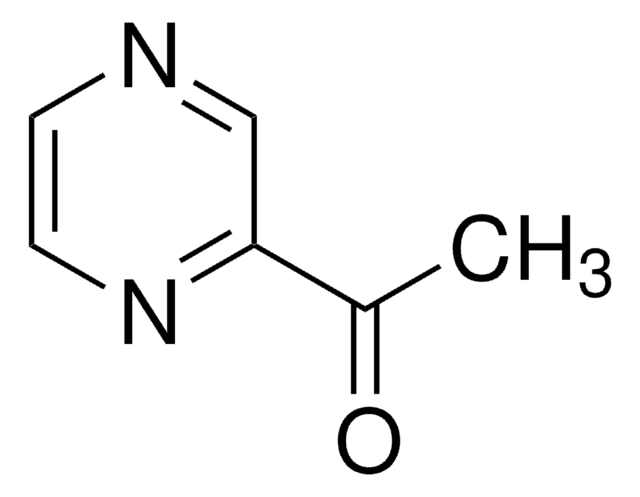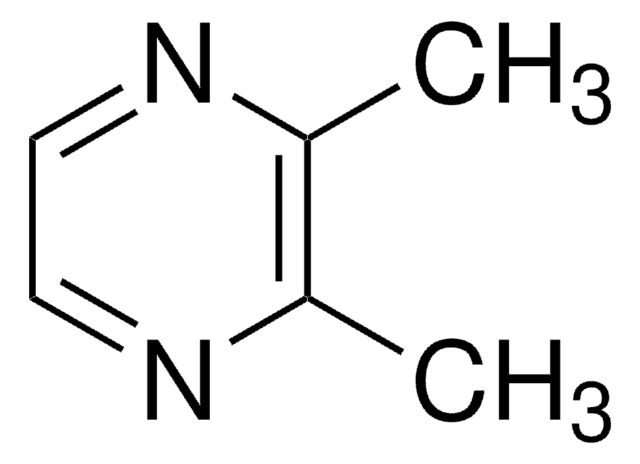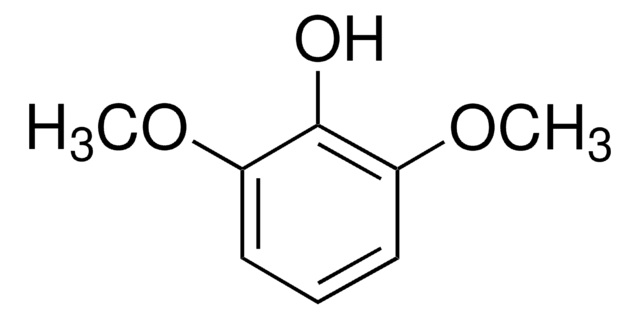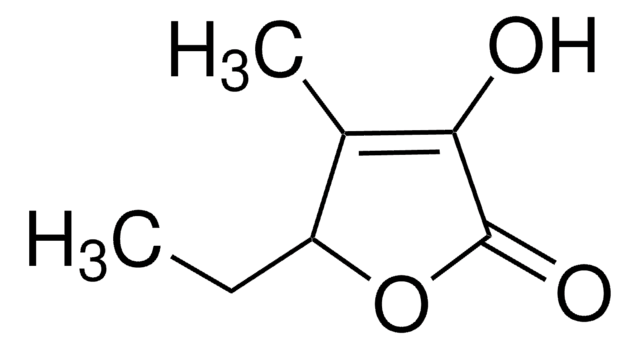Kluczowe dokumenty
W314900
2-Ethyl-3(5 or 6)-dimethylpyrazine, mixture of isomers
≥95%, FG
Synonim(y):
2-ethyl-3,5(or 6)-dimethylpyrazine
About This Item
Fragrance grade
Halal
Kosher
Polecane produkty
pochodzenie biologiczne
synthetic
Poziom jakości
klasa czystości
FG
Fragrance grade
Halal
Kosher
agency
follows IFRA guidelines
zgodność regionalna
EU Regulation 1223/2009
EU Regulation 1334/2008 & 178/2002
Próba
≥95%
współczynnik refrakcji
n20/D 1.5015 (lit.)
bp
180-181 °C (lit.)
gęstość
0.965 g/mL at 25 °C (lit.)
Zastosowanie
flavors and fragrances
Dokumentacja
see Safety & Documentation for available documents
alergen pokarmowy
no known allergens
alergen zapachowy
no known allergens
Organoleptyczne
chocolate; hazelnut; nutty; peanut; roasted
ciąg SMILES
CCc1ncc(C)nc1C.CCc2nc(C)cnc2C
InChI
1S/2C8H12N2/c1-4-8-7(3)10-6(2)5-9-8;1-4-8-7(3)9-5-6(2)10-8/h2*5H,4H2,1-3H3
Klucz InChI
BOFLOMVCGPWPQC-UHFFFAOYSA-N
Szukasz podobnych produktów? Odwiedź Przewodnik dotyczący porównywania produktów
Opis ogólny
Zastosowanie
- Characterization of Flavor Profile of Sauced Pork from Different Regions of China Based on E-Nose, E-Tongue and Gas Chromatography-Ion Mobility Spectroscopy.: This study by Yuan et al. characterizes the flavor profile of sauced pork using various sensory and chromatographic techniques, including gas chromatography-ion mobility spectroscopy. It identifies key aroma compounds, including 2-ethyl-3,5(6)-dimethylpyrazine, contributing to the overall flavor profile (Yuan et al., 2024).
- The effect of thermal times of circulating non-fried roast technique on the formation of (non)volatile compounds in roasted mutton by multi-chromatography techniques and heat transfer analysis.: Liu et al. explore how different thermal processing times affect the formation of volatile and non-volatile compounds in roasted mutton, highlighting the presence of 2-ethyl-3,5(6)-dimethylpyrazine among the key aroma contributors (Liu et al., 2023).
- Investigation of the effect of over-fired drying on the taste and aroma of Lu′an Guapian tea using metabolomics and sensory histology techniques.: Zhang et al. investigate how over-fired drying affects the aroma and taste of Lu′an Guapian tea, identifying 2-ethyl-3,5(6)-dimethylpyrazine as a significant aroma compound (Zhang et al., 2024).
- Unveiling the aromatic intricacies of Wuyi Rock Tea: A comparative study on sensory attributes and odor-active compounds of Rougui and Shuixian varieties.: This comparative study by Wang et al. examines the sensory attributes and odor-active compounds of Wuyi Rock Tea, highlighting the role of 2-ethyl-3,5(6)-dimethylpyrazine in the aroma profile (Wang et al., 2024).
- Characterization of the Key Aroma Compounds in Dong Ding Oolong Tea by Application of the Sensomics Approach.: Wang et al. characterize the key aroma compounds in Dong Ding Oolong tea, identifying 2-ethyl-3,5(6)-dimethylpyrazine as one of the major contributors to its distinct aroma profile (Wang et al., 2023).
Działania biochem./fizjol.
Inne uwagi
Hasło ostrzegawcze
Warning
Zwroty wskazujące rodzaj zagrożenia
Zwroty wskazujące środki ostrożności
Klasyfikacja zagrożeń
Acute Tox. 4 Oral - Eye Irrit. 2 - Skin Irrit. 2 - STOT SE 3
Organy docelowe
Respiratory system
Kod klasy składowania
10 - Combustible liquids
Klasa zagrożenia wodnego (WGK)
WGK 3
Temperatura zapłonu (°F)
156.2 °F
Temperatura zapłonu (°C)
69 °C
Środki ochrony indywidualnej
Eyeshields, Faceshields, Gloves, type ABEK (EN14387) respirator filter
Wybierz jedną z najnowszych wersji:
Masz już ten produkt?
Dokumenty związane z niedawno zakupionymi produktami zostały zamieszczone w Bibliotece dokumentów.
Klienci oglądali również te produkty
Nasz zespół naukowców ma doświadczenie we wszystkich obszarach badań, w tym w naukach przyrodniczych, materiałoznawstwie, syntezie chemicznej, chromatografii, analityce i wielu innych dziedzinach.
Skontaktuj się z zespołem ds. pomocy technicznej